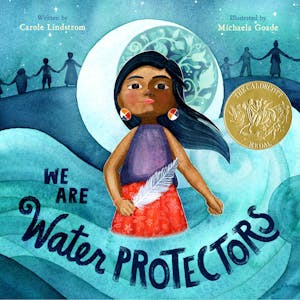The Legend of the Bluebonnet
Children’s folklore
Let me just start off by saying how much I love reading this book to my students. The first time I ever read this book, I cried. The message is so beautiful and pure and tells a lovely story about how the gorgeous Bluebonnet flower came to be. If you are from Texas or Southern Oklahoma, you are more than likely familiar with these Spring time wildflowers and the affinity to take family portraits among them. They also happen to be the state flower of Texas. This favorite legend is based on Comanche Indian lore. She-who-is-alone is a little girl who loved her Native American tribe so much. Her people were suffering from a drought, so this unselfish little girl did what she thought would help end the drought to help her people. She had lost her entire family to the drought that was plaguing the entire Comanche nation. The only thing she had to remember her parents by was a special doll they had made for her. She sacrificed her most beloved possession, her baby doll, in hopes that it would end the drought.
The Shaman said the great spirits were angry at the selfishness of the people and would not end the drought until they sacrificed their most precious possessions. She-who-is-alone was the only one who made an unselfish sacrifice in an attempt to help her people and end the drought. She snuck away and built a fire and sacrificed her beloved doll. The ashes blew into the wind. In the morning, she woke up to a beautiful countryside full of beautiful blue flowers. Her tribe was so thankful and that they changed her name to One-Who-Loved-Her-People.
When I read this book to my students, I have them discuss the sacrifice the young girl made and how they would feel if they had to sacrifice their most prized possession to help others. What is that item? Could they make the sacrifice? How would it make them feel?
Here is a read aloud version your students will love to listen to:
https://youtu.be/TMA7bNsYp5g




